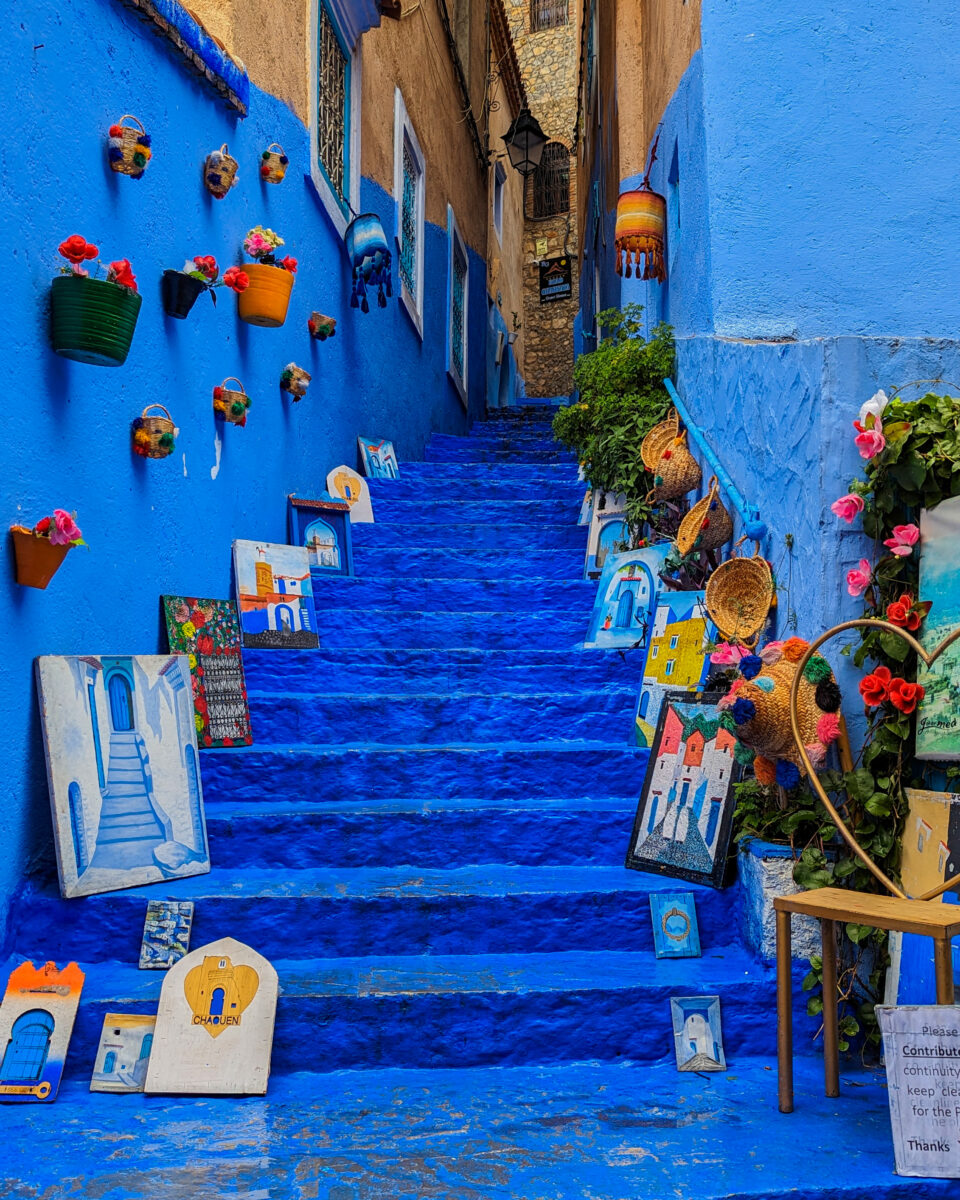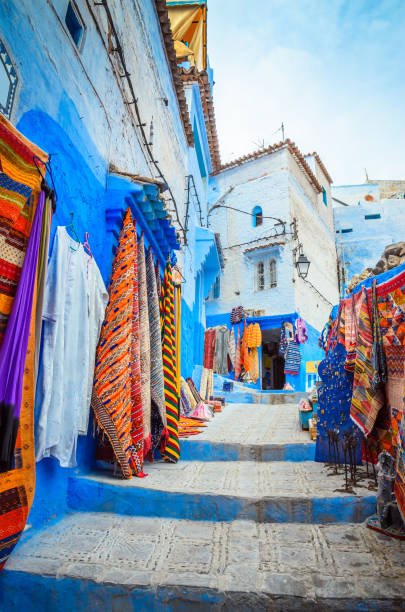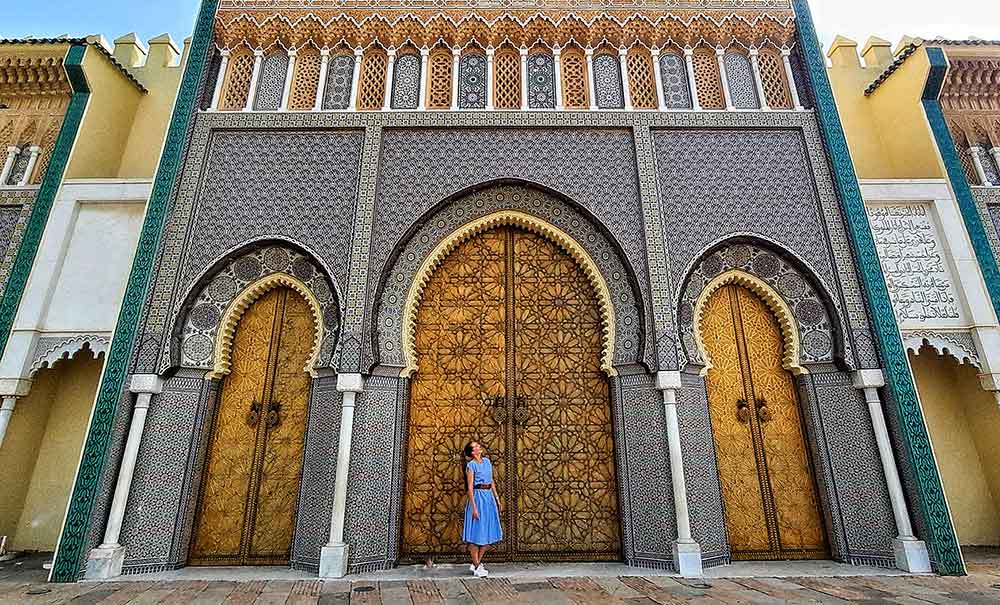Table of Contents
Introduction: The Blue Pearl of Morocco
Nestled in the Rif Mountains of northwest Morocco lies a town that seems to have emerged from a dream — Chefchaouen, often called "The Blue Pearl." This enchanting destination captivates visitors with its mesmerizing blue-washed buildings, narrow winding streets, and a serene atmosphere that feels worlds away from Morocco's bustling imperial cities.
As you ascend the mountainous terrain approaching Chefchaouen, the first glimpse of this azure-hued settlement is nothing short of magical. Surrounded by majestic peaks and verdant landscapes, the town appears as a blue mirage against the rugged terrain, promising an experience unlike any other in Morocco.
The Colorful History of Chefchaouen
Founded in 1471 by Moulay Ali Ben Rachid, Chefchaouen (or simply "Chaouen" to locals) was originally established as a fortress to fight Portuguese invasions of northern Morocco. Soon after its founding, the town welcomed an influx of Moorish and Jewish refugees fleeing the Spanish Reconquista.
These diverse cultural influences shaped Chefchaouen's unique character, blending Andalusian, Moroccan, and Jewish traditions. The town's architecture reflects this rich history, with distinctive Spanish-influenced rooftops and Moroccan doorways coexisting harmoniously throughout the medina.

Historical Timeline
1471: Founded by Moulay Ali Ben Rachid as a fortress to fight Portuguese invasions
1492-1600s: Influx of Moorish and Jewish refugees fleeing the Spanish Reconquista
1920-1956: Under Spanish protectorate control
1956: Morocco gains independence, and Chefchaouen becomes part of the modern nation
1970s-present: Growth as a tourist destination renowned for its distinctive blue color
Why Is Chefchaouen Blue?
The most frequently asked question about Chefchaouen is undoubtedly: "Why is everything painted blue?" While there isn't a single definitive answer, several compelling theories explain this beautiful tradition:
Jewish Influence Theory
Many historians attribute the blue color to the Jewish refugees who settled in Chefchaouen in the 1930s. In Jewish tradition, blue (specifically, a shade called "tekhelet") represents the sky and heaven, reminding people to lead a spiritual life. The refugees are believed to have painted the town blue as a symbolic representation of the divine.
Mosquito Repellent Theory
A more practical explanation suggests that the blue paint contains a natural mosquito repellent. The cool blue tones may have helped keep the buildings cooler in the hot Mediterranean climate and deterred insects from infesting homes.
Water Theory
Some locals believe the blue represents the color of water, symbolizing life and prosperity. Chefchaouen is blessed with abundant fresh water from the surrounding mountains, making it relatively lush compared to other parts of Morocco.

Exploring the Blue Medina
The heart of Chefchaouen is its captivating medina — a labyrinth of blue-washed streets where time seems to slow down. Unlike the overwhelming medinas of Fes or Marrakech, Chefchaouen's old town is relatively compact and less crowded, making it perfect for unhurried exploration.
Plaza Uta el-Hammam
Begin your journey at Plaza Uta el-Hammam, the main square of Chefchaouen. This central gathering place is lined with cafes and restaurants, perfect for people-watching. The square is dominated by the red-walled Kasbah, a 15th-century fortress and dungeon that now houses a small museum and garden. For a modest entrance fee, you can climb the Kasbah's tower for panoramic views over the blue city.
The Winding Blue Alleys
From the main plaza, venture into the maze of narrow lanes that make Chefchaouen famous. Every turn reveals charming scenes: blue steps adorned with colorful potted plants, artistic doorways with intricate carvings, and friendly cats basking in patches of sunlight. The most photographed spots include:
- Callejón el Asri — Perhaps the most famous and photographed alley
- The Spanish Mosque Viewpoint — A short hike offering spectacular views of the blue city
- Bab El Ain — One of the original gates to the medina with a beautiful water source

Photographer's Guide to Chefchaouen
Best Morning Light: The eastern side of the medina catches beautiful morning light, especially around Bab Souk.
Best Sunset Location: The Spanish Mosque viewpoint offers spectacular golden hour light over the entire blue city.
Best Blue Intensity: Visit during midday when the sun is directly overhead to see the blues at their most vibrant.
Local Tip: Early mornings (before 9 AM) offer empty streets, perfect for photography without crowds.
Photography Tips
Chefchaouen is undoubtedly one of the most photogenic places in Morocco, if not the world. To capture the essence of this blue paradise:
- Look for Contrasts: Search for non-blue elements like red flower pots, colorful rugs, or bright doorways that pop against the blue backdrop.
- Capture Local Life: Respectfully photograph locals going about their daily routines for authentic street photography (always ask permission first).
- Play with Light and Shadow: The narrow streets create dramatic light patterns throughout the day, especially in late afternoon.
- Include People for Scale: The tiny doorways and narrow passages are better appreciated with a person in the frame to provide scale.
Remember to be respectful when photographing locals. While many are accustomed to tourists, it's polite to ask permission before taking close-up portraits. Some artisans or shopkeepers may expect a small tip in exchange for photographs.
Local Crafts & Shopping
Chefchaouen is renowned for its distinctive handicrafts that differ from what you'll find in other Moroccan cities. The medina is filled with artisan workshops and small boutiques selling:
Handwoven Textiles
The region is famous for its wool blankets and garments in distinctive blue and white patterns. You'll see woolen items hanging along the medina walls – from blankets and rugs to the distinctive pointed-hood djellabas (traditional robes). These items are often made from local goat and sheep wool using traditional weaving techniques.

Leather Goods
Chefchaouen's leather products, especially its distinctive Sabra leather, are highly sought after. Unlike the famous tanneries of Fes, Chefchaouen's leather is often dyed in various shades of blue or tan and crafted into bags, poufs, and slippers.
Wooden Crafts
Local artisans create beautiful cedar wood products, from small boxes inlaid with mother of pearl to furniture pieces. The scent of cedar permeates many shops in the medina.
Culinary Experiences
The cuisine of Chefchaouen reflects its mountainous location and cultural influences. While you'll find Moroccan staples like tagine and couscous, several local specialties are worth seeking out:
Rif Mountain Cuisine
Try the local goat cheese ("jben"), which is often served with olive oil and fresh bread. The surrounding mountains provide mushrooms, wild herbs, and honey that feature prominently in local dishes.
Where to Eat
For an authentic experience, seek out these recommended restaurants:
- Restaurant Beldi Bab Ssour – Authentic local cuisine with rooftop views
- Populi – Great for breakfast and fresh juices
- Café Clock – Fusion food with cultural programs
- Assaada – Family-run restaurant serving traditional Rif cuisine

Where to Stay
Chefchaouen offers accommodations for every budget, from luxury boutique hotels to humble guesthouses. For the most authentic experience, consider staying within the medina in a traditional riad or dar (Moroccan house with an interior courtyard).
Recommended Stays
- Lina Ryad & Spa – Luxury option with traditional design and modern amenities
- Dar Echchaouen – Beautiful views of the medina with a pool
- Casa Perleta – Charming guesthouse in a restored home
- Hostel Souika – Budget-friendly option with a social atmosphere
Best Time to Visit
Spring (March to May): Comfortable temperatures, blooming countryside, and smaller crowds make this the ideal time to visit.
Fall (September to November): Another excellent period with pleasant weather and fewer tourists.
Summer (June to August): The busiest season with higher temperatures, but still cooler than many parts of Morocco due to the mountain elevation.
Winter (December to February): Can be quite cold with occasional snow, but offers a unique perspective of the blue city under winter light.
Day Trips from Chefchaouen
While Chefchaouen itself deserves at least two full days of exploration, the surrounding Rif Mountain region offers several worthwhile excursions:
Akchour Waterfalls
Just 30 minutes from Chefchaouen lies Akchour, home to stunning waterfalls and the famous "God's Bridge" rock formation. The moderate hiking trails lead through lush vegetation to crystal-clear pools where you can swim during warmer months.
Talassemtane National Park
Nature enthusiasts will appreciate a day trip to this protected area featuring diverse flora and fauna, including endangered Barbary macaques. The park offers hiking trails of various difficulties with breathtaking mountain vistas.

Traditional Villages
Several traditional Berber villages dot the surrounding mountains, offering glimpses into rural Moroccan life. Consider visiting Oued Laou for its beautiful beaches or Beni Boufrah to witness traditional farming methods.
Test Your Knowledge: Chefchaouen Quiz
1. When was Chefchaouen founded?
2. Which of these is NOT a theory for why Chefchaouen is painted blue?
3. What mountains surround Chefchaouen?
Final Thoughts
Chefchaouen offers a dreamy escape from the hustle and bustle of modern life. Its blue lanes invite contemplation, its mountain air refreshes the spirit, and its unique culture creates memories that linger long after leaving. Whether you're a photographer seeking perfect compositions, a shopper hunting for unique crafts, or simply a traveler wanting to experience Morocco beyond the imperial cities, Chefchaouen rewards visitors with its gentle pace and warm hospitality.
A visit to the Blue Pearl of Morocco isn't just a checkbox on a travel itinerary — it's an immersion into a living canvas where every alley tells a story, every doorway frames a moment, and every encounter leaves an indelible impression painted in shades of blue.



